Name: Bernardo Cesare
Which came first in your life, the science or the art?
Science came first, for sure. I am primarily a scientist: A geologist interested in what happens some tens of kilometres beneath our feet, where rocks are transformed, and sometimes melted, due to the great pressures and temperatures they undergo. Specifically, as a petrologist, I study the processes that take place within metamorphic rocks and in their minerals. The “traditional” optical microscope remains the first, essential tool by which a geologist becomes acquainted with a rock and its history. I have been using the microscope for more than thirty years now.
Here the aesthetic side comes in, it started quite early, but has fully developed with the digital revolution. I am reluctant to talk about art, as I think this term should be reserved for important, really high and inspiring works. But learning that Paul Klee wrote: “…Art does not reproduce the visible; rather, it makes visible….” I thought that microscopy could be exactly what he was thinking about.
Nonetheless, I prefer to say I am a photographer or a reporter helping rocks showcase their inner hidden beauty.
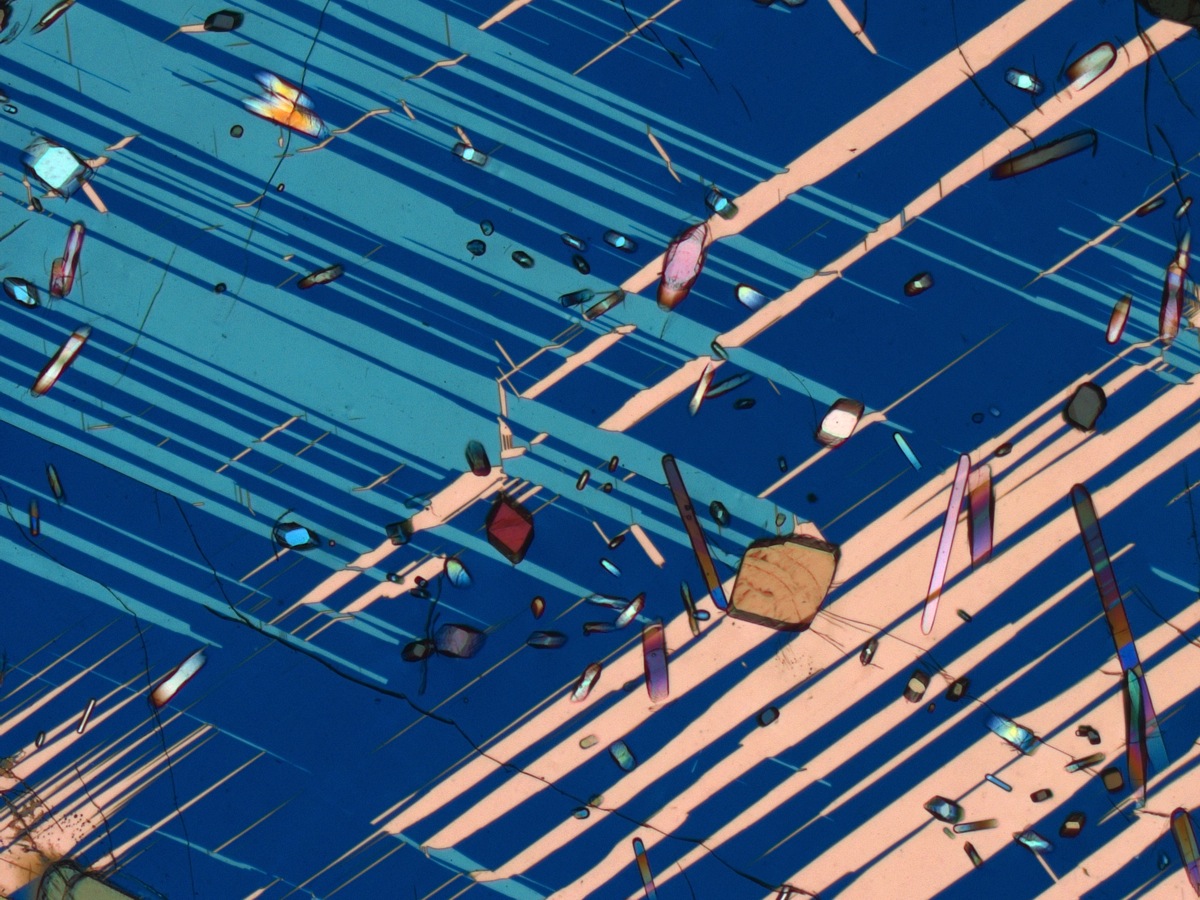
Twinned Cordierite (Spain)
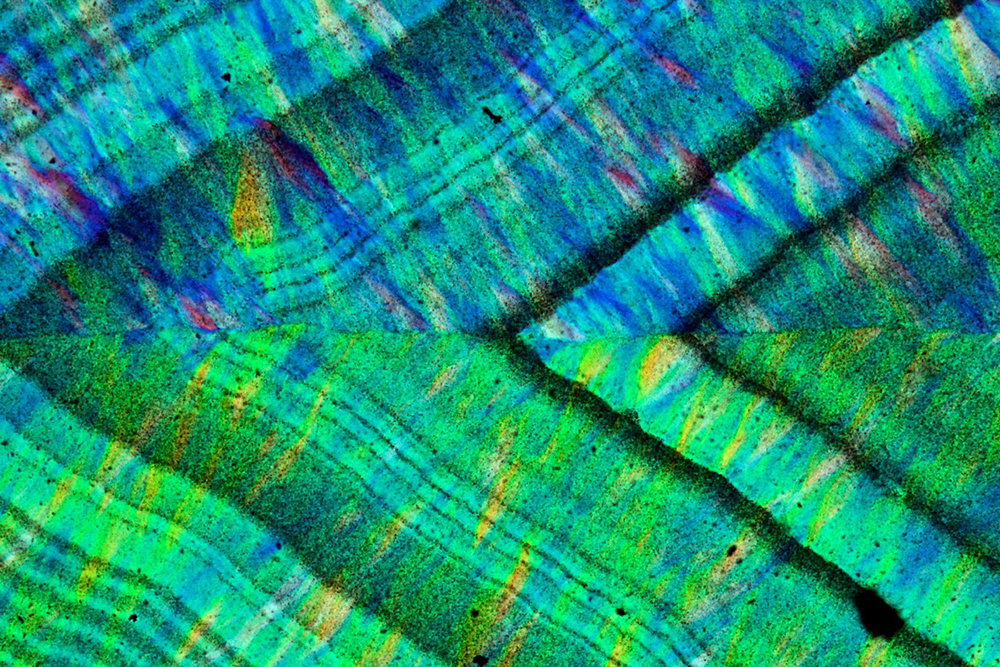
Agate (Malawi)
Which sciences relate to your art practice?
The sciences are primarily petrology – the study of rocks – and mineralogy, but each of my photomicrographs can tell a geological story covering all the various branches of geoscience. In addition, my images of stretched nylon and other plastic materials relate to material sciences. Recently I also took photographs of some Italian drinks under the microscope, and this part could relate more to chemistry and food science.
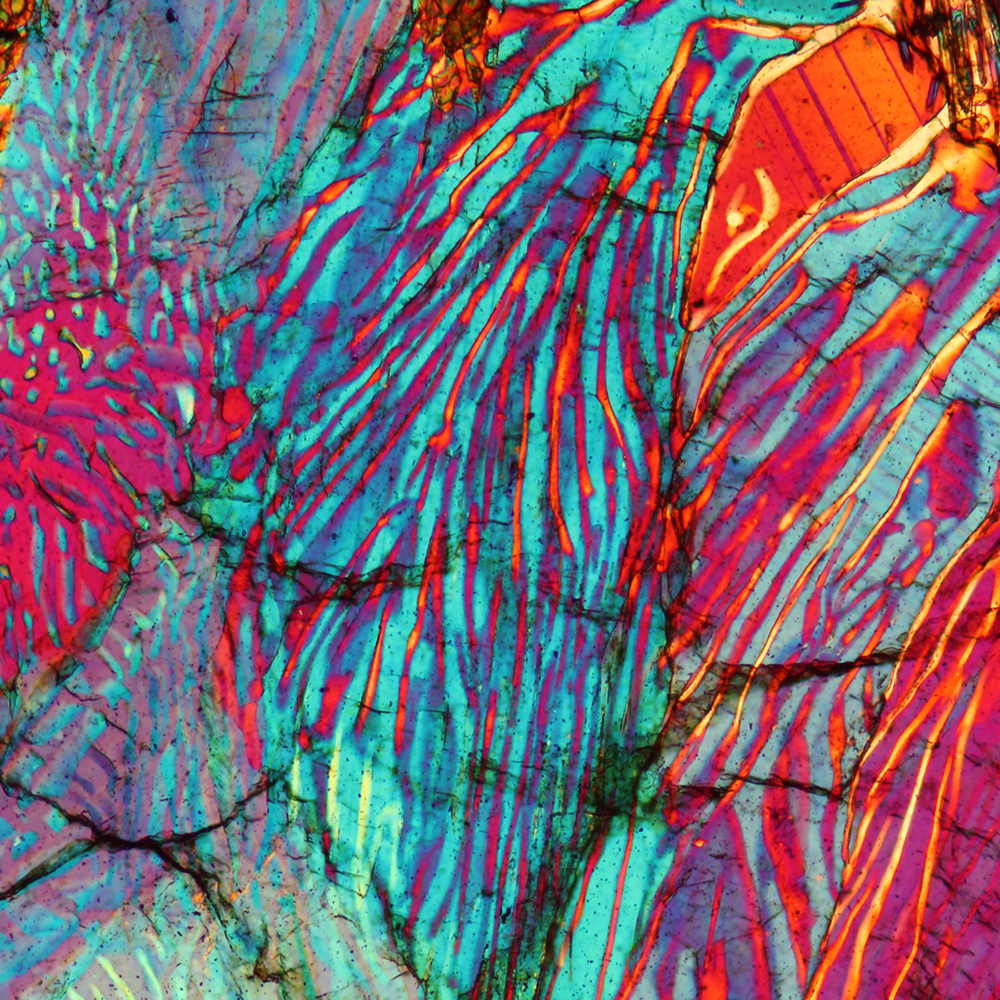
Myrmekite (Ivrea Zone, Italy)
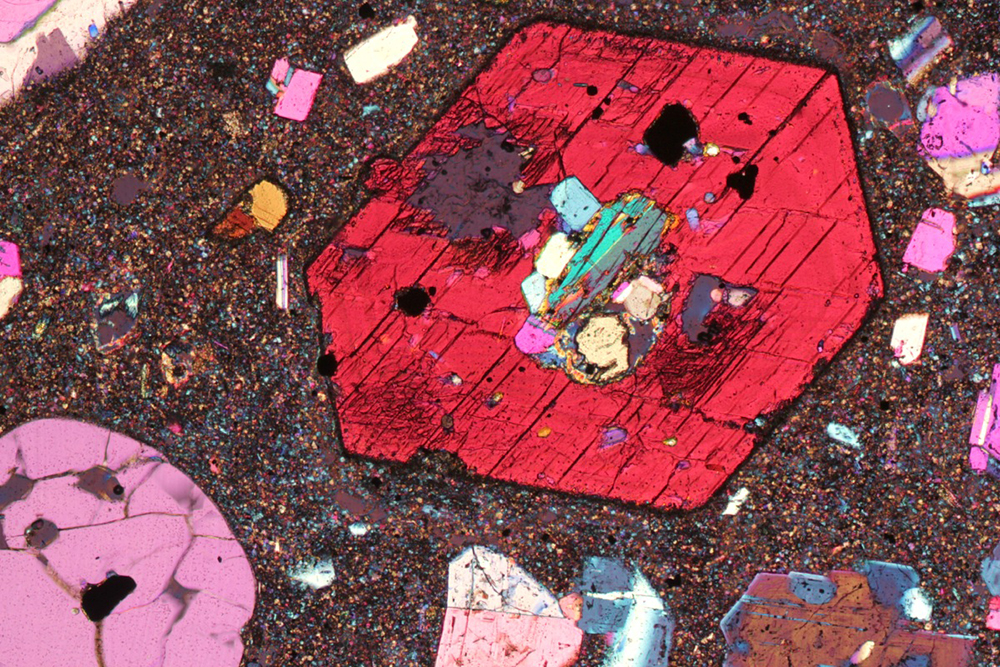
Amphibole in lava (Carboneras, Spain)
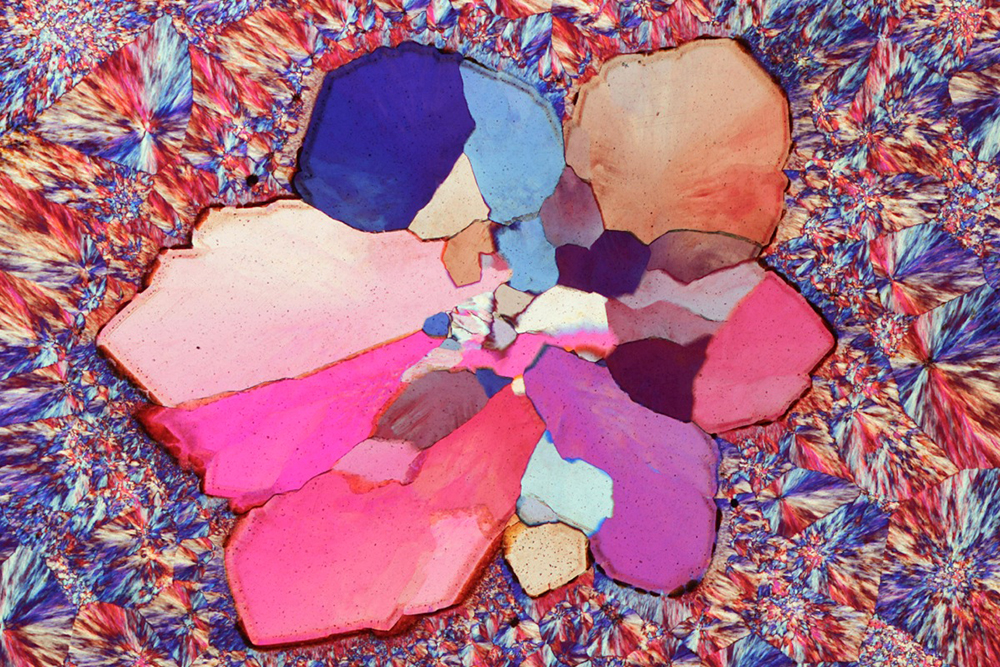
Ocean Jasper (Madagascar)
What materials do you use to create your artworks?
My artworks are photographs, taken with a camera attached to a microscope. My materials are generally fragments of rocks, sliced so thin they become transparent. They are called “thin sections” and are 0.03 mm thick. The images depict small areas of a thin section, approximately one millimetre across, depending on the lens that I use.
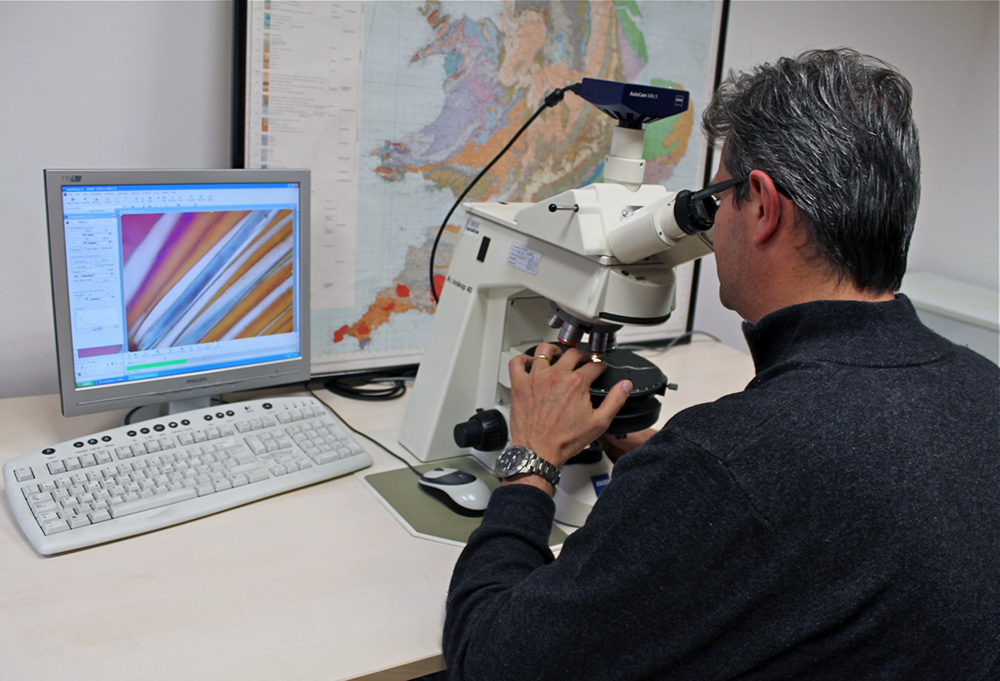
Cesare at microscope
Along with rocks and minerals I have photographed other materials: stretched pieces of nylon, cling film, Italian drinks such as Campari, Aperol and the excellent limoncello homemade by my mother-in-law. The last material I tried was maple syrup, which upon drying would form very aesthetic crystals.
I generally have my photos printed on canvas or paper. I have also tried to print on rock slabs and would like to explore this further, in addition to printing on fabric.
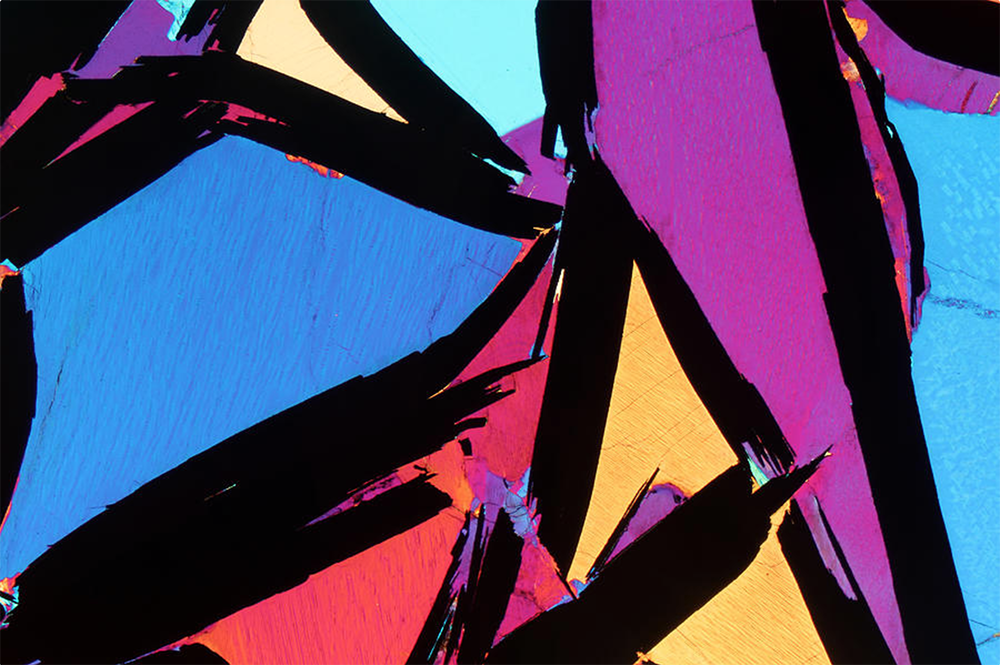
Graphitic Granulite
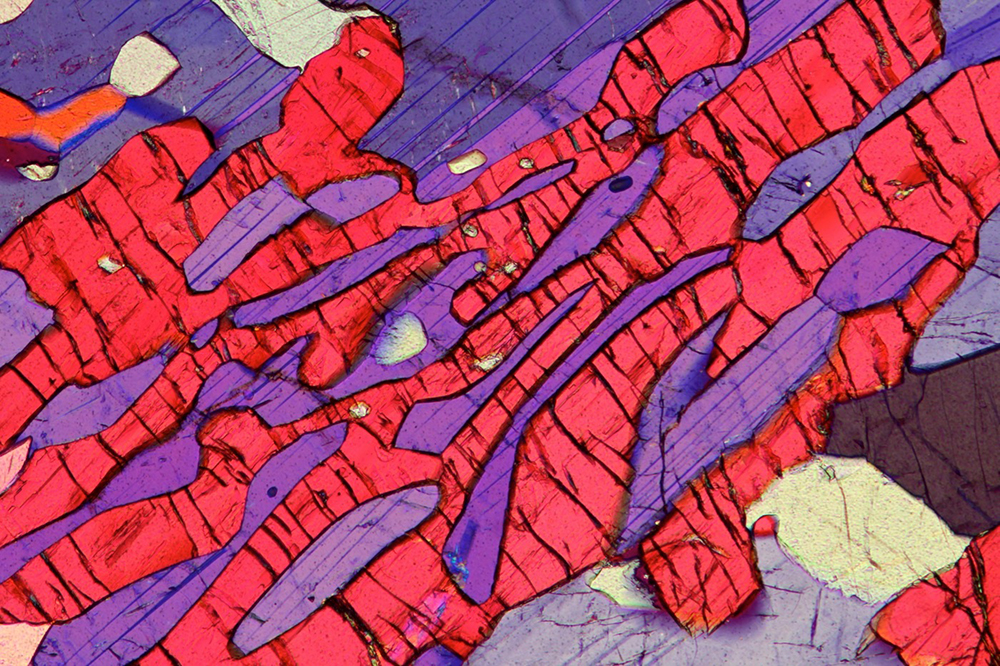
Symplectite (Manitoba, Canada)

Myrmekite (Antarctica)
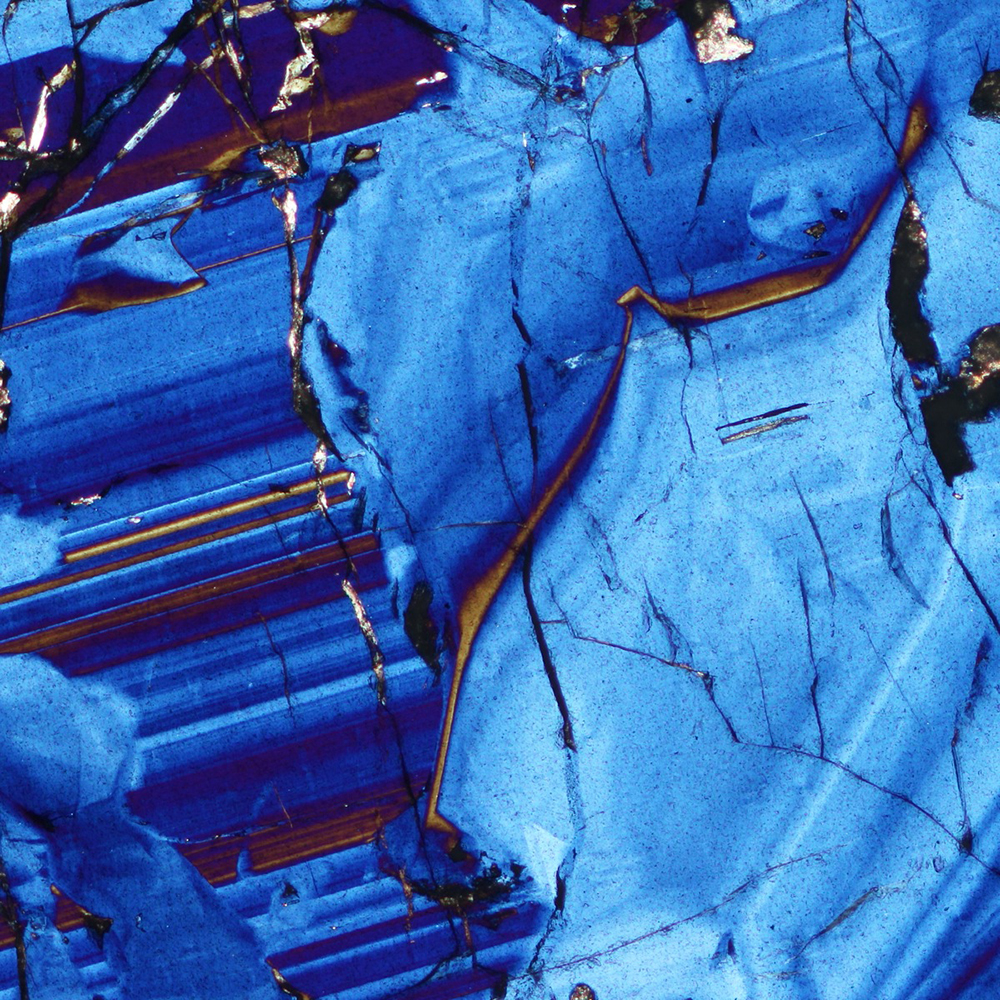
Zoned Vesuvianite (Canzoccoli, Italy)
Artwork/Exhibition you are most proud of:
I think my photographs give their best when printed on a transparent medium and backlit, like stained glass. This is exactly how polarized light microscopy works, and how anyone could view the subjects looking down the eyepieces of a microscope. Two exhibits – both with large format, backlit prints – maximized the visual impact of my photos: “Light on the Rocks”, held in Bolzano, Italy (2011) and Olten, Switzerland (2012), and; “Pietre Inquadrate” held in Padova, Italy (2013). I look forward to the next exhibition, especially the one where I will have the photos printed on stone slabs. It will be called: “Rocks on Rocks”.

Light on the Rocks Exhibition
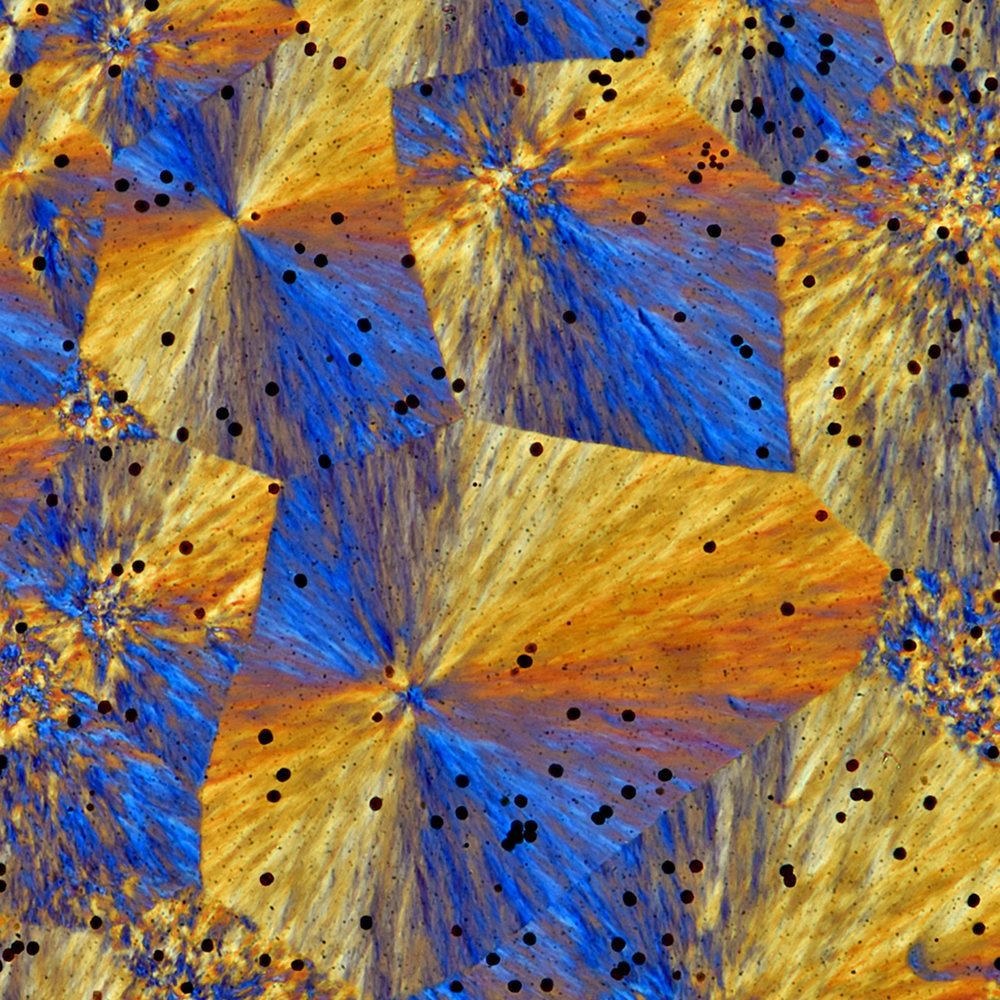
Ocean Jasper (Madagascar)
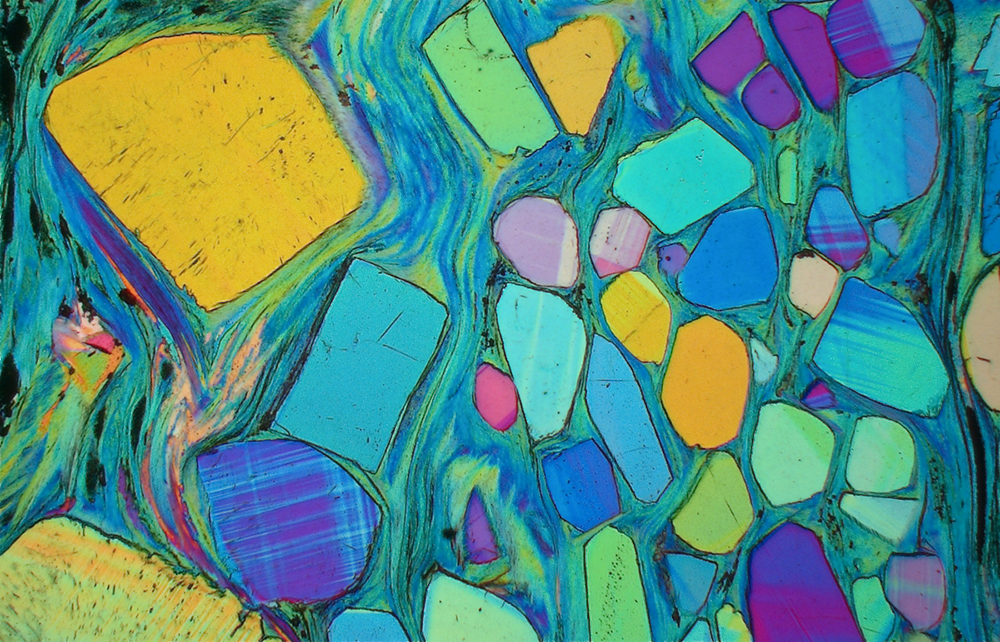
Charoite schist (Yakutia)
Which scientists and/or artists inspire and/or have influenced you?
Rock photomicrography is a novel aesthetic field. From a scientific point of view, I have tried to make my micrography reach the quality standards of Ron Vernon (an emeritus professor at Macquarie University, Australia), who is for sure the genius of petrography and photographic rock microstructure illustration.
From an aesthetic viewpoint, I’ve been inspired by the optical micrographs of the late Michael Davidson (Florida, USA), who was the guru of microscopy and whose “Bevshots” – photos of drinks – are real masterpieces. I love the images of another science-artist, Martin Öggerli “Micronaut”, who was able to bring scientific imaging to a new aesthetic level. I love the colours of some impressionists and Murano glassmakers.
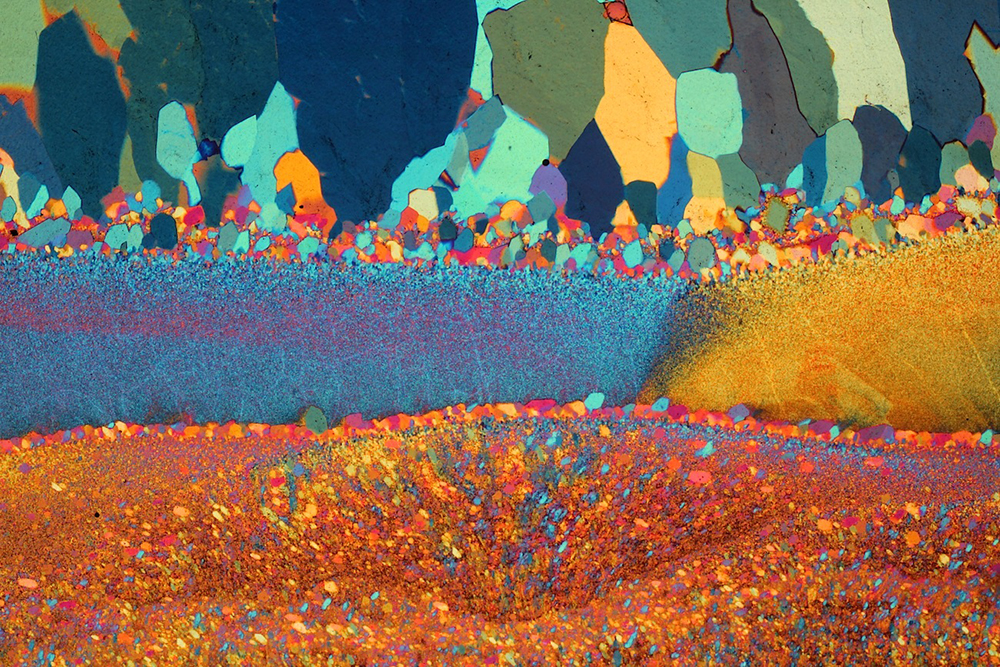
Agate (Brazil)
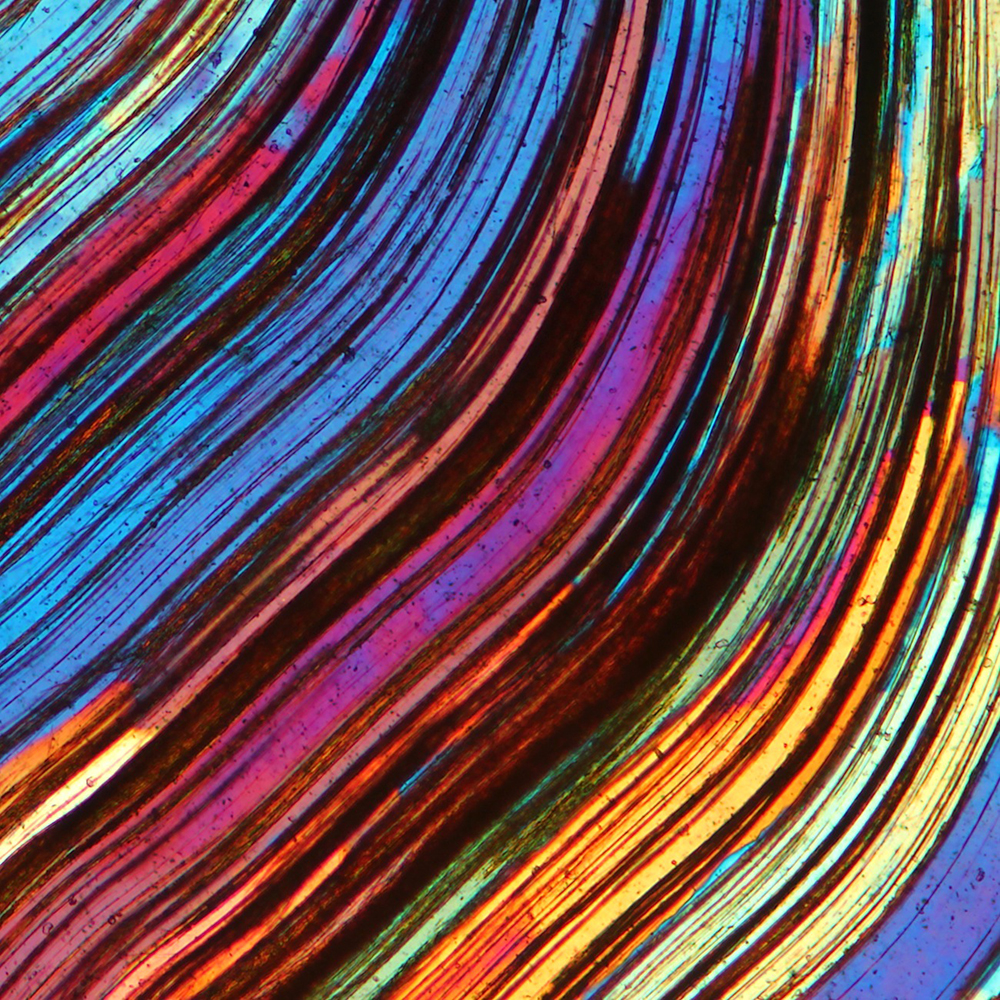
Tiger’s Eye (South Africa)
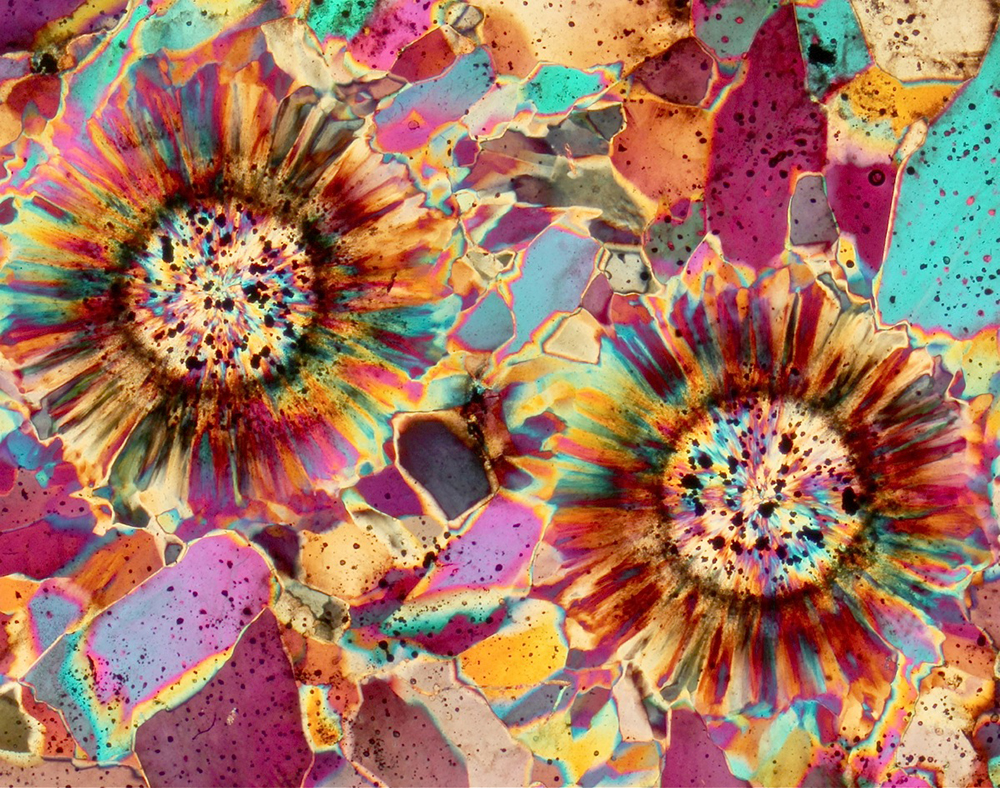
Ocean Jasper (Madagascar)
Is there anything else you want to tell us?
I just started experimenting with the technique of image stitching. By covering a subject with many photomicrographs and joining them in a single image, I can obtain files with extremely high resolution that can be printed on huge surfaces. Maybe, one day, you will see the micrograph of a tiny piece of rock covering the wall of a building.
Share this Post

